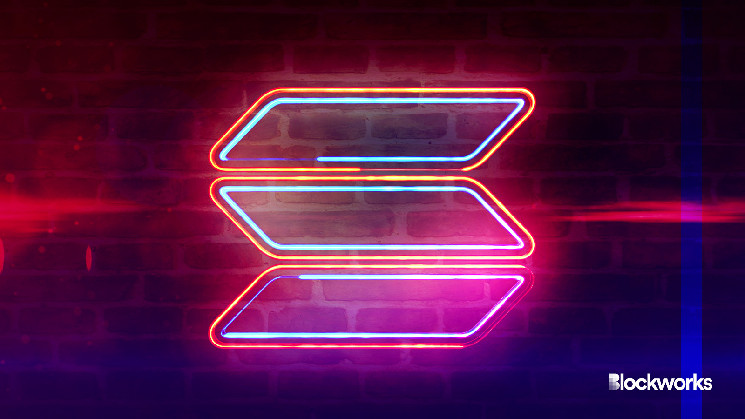
Solana’s validators are a bit like baristas flipping around an iPad — they’re nicer to you when you include a tip. And as traders keep cramming into Solana’s metaphorical coffee shop, the validator tip jar looks increasingly stuffed with money.
Validators are a group of 1,728 computers that run software to produce blocks on the Solana blockchain. Coinbase Cloud is a prominent Solana validator, as is Google Cloud. One revenue stream that validators earn is called maximal extractible value (MEV), which refers partly to tips paid by searchers to be included in Solana blocks.
This MEV revenue has been growing quickly since mid-March. Notably, Solana validators are earning more from MEV overall than Ethereum validators, according to Blockworks Research. Just a few months ago, Solana’s MEV revenue was a rounding error compared to Ethereum’s.
Read more: MEV doesn’t have to be a zero-sum game, research suggests
Broadly defined, MEV refers to the largest amount of value that validators can create by packing transactions into blockchain blocks. Blockworks Research’s dashboard suggests Solana validators raked in a hair under $7 million from MEV last week.
At the moment, Solana MEV is almost entirely the product of a protocol named Jito. Jito offers a fork of the Solana validator called Jito-Solana, and 78% of Solana’s validators use this client, according to Jito’s website. The client lets searchers, or traders, arrange transactions in bundles. Searchers can include a tip to try getting validators to send their particular bundle to the blockchain.
Whether all this is good for Solana is something of a matter of perspective. Some forms of MEV can be predatory. Jito recently suspended its mempool, a kind of waiting area for transactions, due to “sandwich attacks” that let opportunists create MEV by trading right before and after a transaction to manipulate the price and take profit from the trader.
Read more: Jito Labs ends mempool functionality citing impact on Solana users
In Jito’s telling, the protocol is making Solana more efficient while also minimizing negative forms of MEV like sandwich attacking. If it can pull that off, Solana could see a lot of benefit.
Continued long-term growth in Solana’s MEV would likely imply that less spam is being included in blocks, and Solana would have more available blockspace, Blockworks Research analyst Hayden Tsutsui said. In a best case scenario, more blockspace could free up room for more on-chain activity, which could also bring along more liquidity, Tsutsui said.
But it bears mentioning that as things currently stand, Solana is still staggering under a mountain of spam. More than 60% of non-vote transactions fail on Solana, according to Blockworks Research, largely due to bots taking advantage of Solana’s cheap fees by inundating the network in hopes of getting transactions to land.
